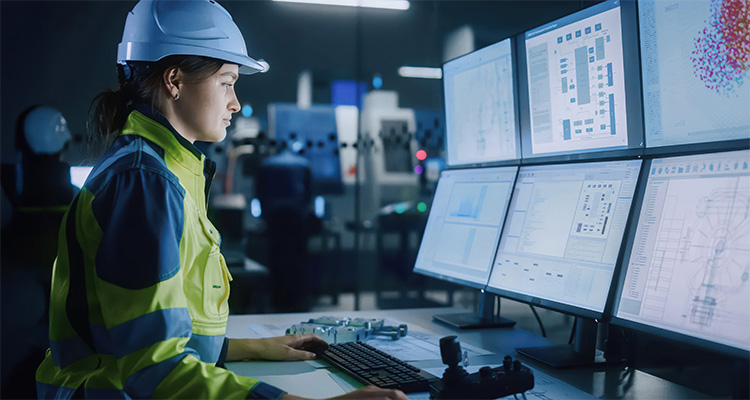Digital twins in oil and gas. By Rick Standish
It might not be long until we experience a watershed moment for the use of artificial intelligence (AI) within oil and gas.
After years of experimentation, AI is no longer a futuristic concept in the industry. It is already reshaping operations, particularly through digital twin technology, which has evolved from passive monitoring systems into an intelligent, predictive, and autonomous tool. Companies are now deploying generative AI to interpret subsurface data, applying natural language processing to tame complex documentation, and training deep learning models to flag maintenance needs before failures occur.

But not all AI is created equal, or equally useful. Under growing economic pressure from falling crude prices, trade tensions, and shrinking demand, oil and gas operators may be forced to rethink where they place their bets. The next phase of AI adoption is expected to be defined by purpose: production-ready tools that align with business priorities and deliver tangible returns on digital investments.
The numbers back this claim. According to a recent Hexagon survey, nearly half (47 percent) of oil and gas executives plan to add AI capabilities to their digital twins, the highest figure of any industry polled. This is a clear signal that leaders are no longer asking if AI should be part of their operations, but where it can move the needle faster.
From overload to insight
Oil and gas operators are not short on data, but gathering and analyzing it, quickly and accurately, remains one of the industry’s toughest challenges.
From legacy documents to engineering drawings, datasheets, and 3D scans, the volume and complexity of information generated by industrial facilities often creates more friction than insight. According to IDC, 65 percent of refinery executives rank data cleansing and standardization among their top priorities over the next two years. This is a clear sign that foundational data problems still demand attention.
This is where AI is quietly becoming indispensable. New AI-powered services can now ingest and contextualize vast stores of unstructured legacy data, extracting tags from piping and instrumentation diagrams (P&IDs), technical drawings, and datasheets. At the same time, advances in AI are accelerating the integration of 3D laser scans, creating richly detailed spatial visualizations that would have been impractical to build – let alone maintain – just a few years ago.
The result? Digital twins with a new level of depth, interconnectedness, and operational utility.
One of Europe’s largest independent oil and gas producers recently put this into practice. In just three months, the company digitized and classified more than five million control documents, enriched with metadata aligned to its asset taxonomy. At the same time, it integrated over 20,000 laser scan points into a unified visualization environment, surfacing critical information that had long been buried and putting it to work to drive compliance and optimize performance.
 AI-driven digital twins deliver real impact
AI-driven digital twins deliver real impact
The role of AI in digital twins is evolving fast, from passive data recall to active decision-making that improves performance and safety. One offshore operator offers a compelling example: managing a deepwater platform with a complex legacy, including multiple ownership changes and fragmented safety systems.
By embedding AI across maintenance, optimization, monitoring, and compliance, the operator unlocked new levels of operational control.
For maintenance, machine learning tracks vibration and temperature patterns in critical equipment such as pumps and compressors. When subtle signs of bearing degradation emerge, the system predicts failure up to two weeks in advance. This gives crews time to respond before issues escalate into outages.
AI also helps drive production gains. The digital twin runs simulations to test operating scenarios and fine-tunes parameters such as separator pressure and flow rate in real time. The result: more efficient operations, lower energy usage, and greater output.
AI-enhanced digital twins are giving offshore and onshore teams a shared window into operations, all through a cloud-based platform. Engineers can explore systems in 3D, search documentation using natural language, and test fixes in a simulated environment before acting in the field.
On the safety front, the twin acts as a real-time sentinel. It continuously monitors emissions, gas leaks, and critical systems, using AI to flag anomalies near the flare stack and automatically initiate safety protocols. This not only strengthens compliance but also reduces environmental risk.
These advanced capabilities show why AI-powered twins are gaining momentum. They offer more than incremental efficiency. They deliver the reliability, agility, and operational resilience oil and gas companies need to navigate an uncertain future.
Rick Standish
Hexagon is the global leader in precision technologies at any scale. Its digital twins, robotics and AI solutions are transforming the industries that shape our reality. Hexagon’s Asset Lifecycle Intelligence division helps clients design, construct, and operate more profitable, safe, and sustainable industrial facilities. It empowers customers to unlock data, accelerate industrial project modernization and digital maturity, increase productivity, and move the sustainability needle.

 AI-driven digital twins deliver real impact
AI-driven digital twins deliver real impact